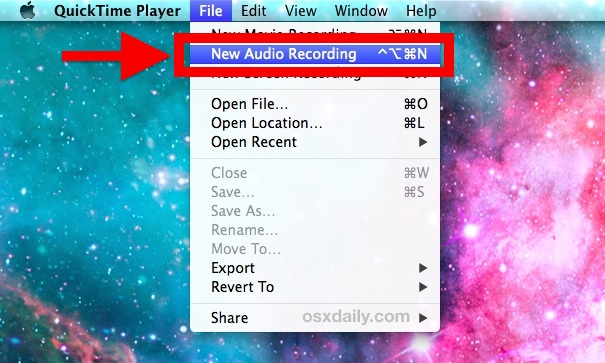Audio
People manipulate sound through the volume buttons, silence switch, headphone controls, and the onscreen volume slider. Many third-party accessories include sound controls too. Audio can be output through internal or external speakers, headphones, and even wirelessly through an AirPlay-enabled or Bluetooth device. Whether sound is a primary aspect of your app’s experience or an embellishment, you need to know how people expect sound to behave and meet those expectations.
Jul 20, 2016 First open your /Library/Sounds folder. The easiest way to do this is to select the “Go” menu in Finder, hold the “Option” key until “Library” appears. Then click it. From there, open the Sounds folder. To use custom sound effects, they have to be in AIFF format.

Silence
Mac Sound Effects App Large Room Without
Jun 17, 2018 Top 22 Best Sound Effect Apps For Android And iOS. Cartoon Sound Effects. Cartoon sound effects is one of the best free sound effect apps for android and iOS users which has a feature to make funny cartoon sounds. It is fully fun and entertain app for all old and young user. You can easily create a music depend upon different cartoon faces. Check out Alarms: Sound Effects by Sound Effects on Amazon Music. Stream ad-free or purchase CD's and MP3s now on Amazon.com.
People switch their device to silent to avoid being interrupted by unexpected sounds, such as ringtones and incoming message sounds. They also want nonessential sounds disabled, including keyboard sounds, sound effects, game soundtracks, and other audible feedback. When the device is set to silent, only explicitly initiated sounds should occur, such as audio during media playback, alarms, and audio/video messaging.
Volume
Whether using physical device buttons or an onscreen slider, people expect changes in volume to affect all sound systemwide, including music and in-app sound effects. The only exception is the ringer volume, which is always adjusted separately when audio isn’t actively playing.

Mac Sound Effects App Large Rooms
Headphones
Mac Sound Effects App Large Room Ideas
People use headphones to hear sound privately and to free their hands. When plugging in headphones, users expect sound to reroute automatically without interruption. When unplugging headphones, they expect playback to pause immediately.
Designing a Great Audio Experience
Adjust levels automatically when necessary, but not the overall volume. Your app can adjust relative, independent volume levels to achieve a great mix of audio. However, the final output should always be governed by the system volume.
Mac Sound Effects App Large Room Screen
Permit rerouting of audio when appropriate. People often want to select a different audio output device. For example, they may want to listen to music through their living room stereo, car radio, or Apple TV. Support this capability unless there’s a compelling reason not to.
Use the system-provided volume view to allow audio adjustments. The best way to provide interface controls for adjusting audio is to use a volume view. This view is customizable, includes a volume-level slider, and even includes a control for rerouting audio output. For developer guidance, see MPVolumeView.
Use the system’s sound services for short sounds and vibrations. For developer guidance, see System Sound Services.
Categorize your audio if sound is essential to your app. Different audio categories allow sounds to be silenced by the silence switch, to mix with other audio, or to play while your app is in the background. Pick a category based on its meaning and the current audio state of the device, and assign it to your audio sessions. For example, don’t make people stop listening to music from another app if you don’t need to. In general, it’s best to avoid changing the category while your app is running, with the exception of apps that record and play back audio at different times. For developer guidance, see Audio Session Programming Guide.
| Category | Meaning | Behavior |
|---|---|---|
| Solo ambient | Sound isn’t essential, but it silences other audio. For example, a game with a soundtrack. | Responds to the silence switch. Doesn’t mix with other sounds. Doesn’t play in the background. |
| Ambient | Sound isn’t essential, and it doesn’t silence other audio. For example, a game that lets people play music from another app during gameplay in place of the game’s soundtrack. | Responds to the silence switch. Mixes with other sounds. Doesn’t play in the background. |
| Playback | Sound is essential and might mix with other audio. For example, an audiobook or educational app that teaches a foreign language, which people might want to listen to after leaving the app. | Doesn’t respond to the silence switch. May or may not mix with other sounds. Can play in the background. |
| Record | Sound is recorded. For example, a note-taking app that offers an audio recording mode. An app of this nature might switch its category to playback if it lets people play the recorded notes. | Doesn’t respond to the silence switch. Doesn’t mix with other sounds. Can record in the background. |
| Play and record | Sound is recorded and played, potentially simultaneously. For example, an audio messaging or video calling app. | Doesn’t respond to the silence switch. May or may not mix with other sounds. Can record and play in the background. |
Resume audio playback when appropriate after an interruption occurs. Sometimes, currently playing audio is interrupted by audio from a different app. Temporary interruptions such as incoming phone calls are considered resumable. Permanent interruptions, such as a music playlist initiated by Siri, are considered nonresumable. When a resumable interruption occurs, your app should resume playback when the interruption ends if audio was actively playing when the interruption started. For example, a game playing a soundtrack and a media app in the process of playing audio should both resume.
Let other apps know when your app finishes playing temporary audio. If your app might temporarily interrupt the audio of other apps, it should flag audio sessions appropriately so other apps get notified when it’s safe to resume. For developer guidance, see the AVAudioSessionSetActiveOptionNotifyOthersOnDeactivation constant in AVFoundation.
Respond to audio controls only when it makes sense. People can control audio playback from outside of your app’s interface, such as in Control Center or with controls on their headphones, regardless of whether your app is in the foreground or background. If your app is actively playing audio, in a clear audio-related context, or connected to an AirPlay-enabled device, it’s fine to respond to audio controls. Otherwise, your app shouldn't halt another app’s audio that may be playing when a control is activated.
Don’t repurpose audio controls. People expect audio controls to behave consistently in all apps. Never redefine the meaning of an audio control. If your app doesn’t support certain controls, then it simply shouldn’t respond to them.
Every Mac can play sound through speakers (built-in or external) or headphones, from making the simplest beeping noise to playing audio CDs like a stereo. Three primary ways to modify the sound on your Mac involve volume, balance, and input/output devices.
Volume: Simply means how loud your Mac plays sound by default. Many applications, such as iTunes, also let you adjust the volume, so you can set the default system volume and then adjust the volume within each application, relative to the system volume, as well.
Balance: Defines how sound plays through the right and left stereo speakers. By adjusting the balance, you can make sound louder coming from one speaker and weaker coming from the other.
Input/output: Depending on your equipment, you might have multiple input and output devices — speakers and headphones as two distinct output devices, for example. By defining which input and output device to use, you can define which one to use by default.

To modify the way your Mac accepts and plays sound, follow these steps:
Choose Command→System Preferences and click the Sound icon.
Or, Control-click the System Preferences icon on the Dock and choose Sound from the menu that opens. The Sound preferences pane appears, as shown.
Choose a sound effect.
Click the Sound Effects tab (if it isn’t already selected) and scroll through the list to choose the sound your Mac will play when it needs your attention, such as when you’re quitting an application without saving a document.
(Optional) From the Play Sound Effects Through pop-up menu, choose whether your Mac plays sounds through its built-in Internal Speakers or through another set of speakers you might have connected to your Mac.
(Optional) Drag the Alert Volume slider to the desired location to set how loudly (or softly) your Mac will play the alert when it needs to get your attention.
(Optional) Select (or deselect) either of the following check boxes:
Play User Interface Sound Effects: Lets you hear such sounds as the crinkling of paper when you empty the Trash or a whooshing sound if you remove an icon from the Dock.
Photo software for mac reviews. Play Feedback When Volume Is Changed: Beeps to match the sound level while you increase or decrease the volume.
(Optional) Drag the Output Volume slider or press the volume-up and volume-down keys on the keyboard.
Output volume defines the maximum volume that sound-playing applications can emit, so if you set Output volume at 75 percent and then play a song in iTunes with the iTunes volume at 50 percent, the song plays at 37.5 percent of the Mac’s maximum output capacity.
(Optional) Select (or deselect) the Show Volume in Menu Bar check box.
When selected, you can see and adjust your Mac’s volume from the menulet in the menu bar.
Menulets are mini menus that open when you click the icons on the right end of the menu bar and give you quick access to specific System Preferences settings, such as Network, Time and Date, or Sound.
Click the Output tab to display the Output preferences pane.
Click the output device you want to use if you have another output option connected to your Mac, such as headphones or external speakers.
Drag the Balance slider to adjust the balance.
Click the Input tab to open the Input preferences pane, as shown in the figure.
Click the input device you want your Mac to use to receive sound.
For instance, you might choose a built-in microphone or the line in port as your input device.
Your Mac may not have a Line In port — the MacBook Air does not.
Drag the Input Volume slider to adjust the default input volume.
Select (or deselect) the Use Ambient Noise Reduction check box to eliminate background noise.
Select this option if you’re recording with the built-in microphone or someone you’re having a FaceTime or Messages voice or video chat with complains that they can’t hear you clearly. Restaurant floor plan maker free.
Click the Close button to close the Sound preferences pane when you finish making adjustments.
Input preferences let you define how to record sound.